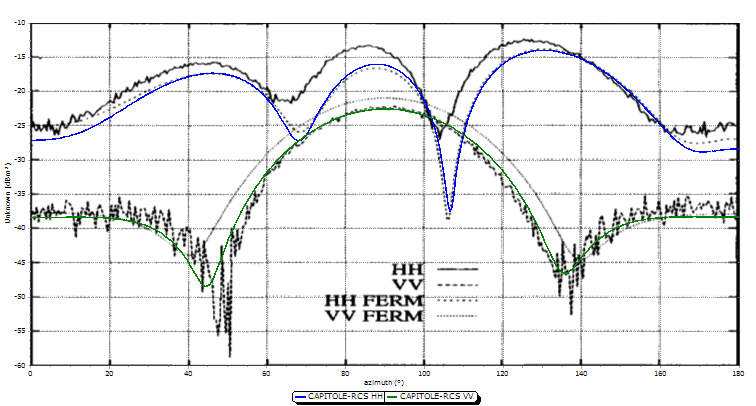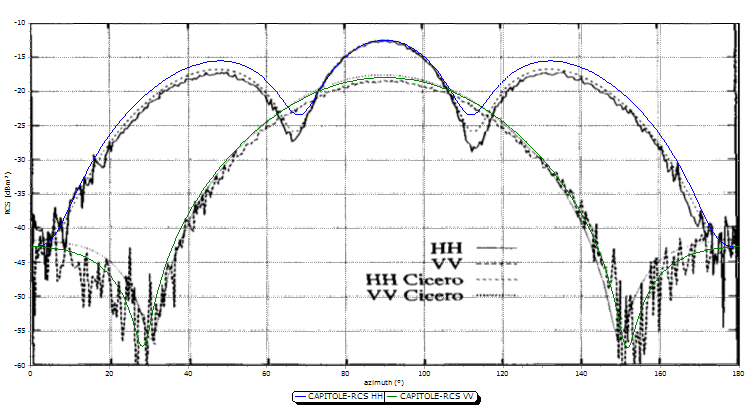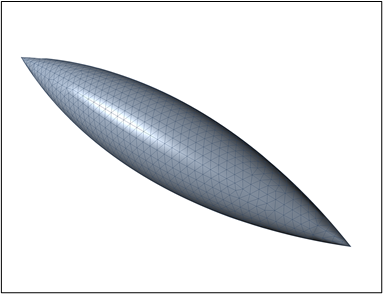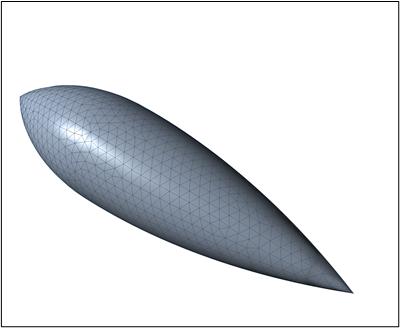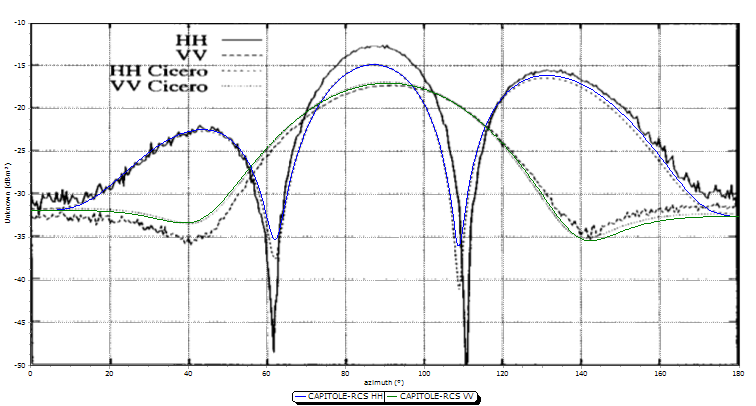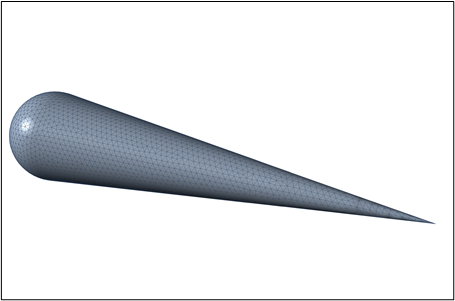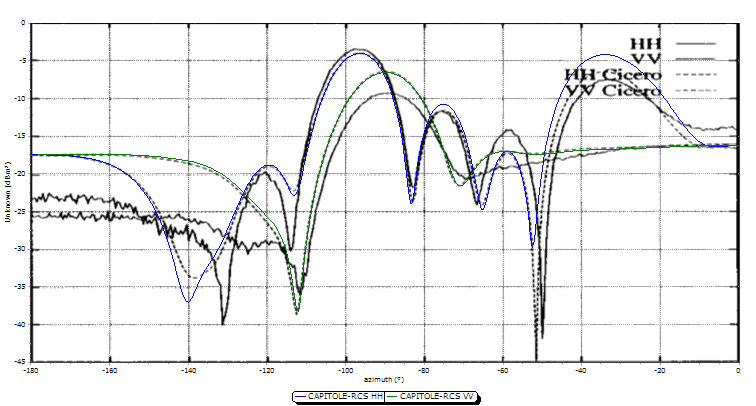Metallic Almond” is not in fact a simple shape.
It is defined by mathematical equations to form an almond-shaped surface.
This model is very interesting for the study of SCR, as it highlights the great dynamics of the SCR value.
The mesh must be refined on the tip and base to maintain good precision on the results.
Total length is 0.25 m (9.936 inches).

